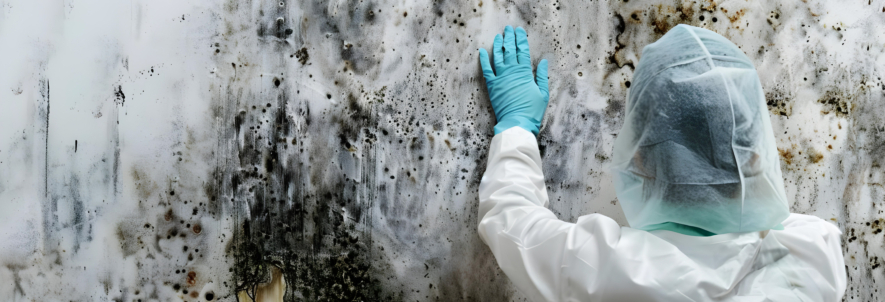
As of 2025, the remediation industry has witnessed significant technological advancements in addressing mold, lead, and asbestos hazards. These innovations aim to enhance efficiency, safety, and environmental sustainability. Below is an overview of emerging technologies in each area, along with corresponding protective clothing recommendations.
Mold Remediation
Emerging Technologies
AI-Powered Detection: Advanced sensors analyze environmental factors like humidity and temperature to detect mold growth in real-time, enabling early intervention.
Enzyme-Based Removal: Utilizes biodegradable, non-toxic enzymes to break down mold at the molecular level, offering a safer alternative to harsh chemicals. Examples of enzymes used in mold remediation include:
- Protease: Breaks down protein-based components in mold, such as spores and allergens, facilitating their removal.
- Amylase: Targets starches and polysaccharides that mold feeds on, disrupting its food source and hindering growth.
- Lipase: Degrades lipids and fatty substances, effectively removing mold residues on various surfaces.
- Cellulase: Breaks down cellulose, a primary component of wood and plant materials, aiding in the removal of mold from such surfaces.
- Laccase: Oxidizes phenolic compounds in mold cell walls, contributing to the degradation of mold structures.
Electrostatic Sprayers: Apply mold-fighting solutions with an electrostatic charge, ensuring even coverage and adherence to surfaces.
Advanced Containment Systems: Nano-fiber barriers and intelligent negative pressure systems enhance containment during remediation.
HEPA 2.0 Filtration: Incorporates UV-C technology and photocatalytic oxidation to capture and neutralize mold spores and mycotoxins.
Protective Clothing Guidance
- Minimum PPE: For small areas (<10 sq ft), use gloves, goggles, and an N-95 respirator.
- Limited PPE: For areas between 10–100 sq ft, employ half-face or full-face air-purifying respirators with P100 filters, along with disposable coveralls.
- Full PPE: For large areas (>100 sq ft) or high exposure levels, utilize full-face powered air-purifying respirators (PAPRs) and full-body suits made of breathable, mold-impervious materials like TYVEK®, with sealed seams at wrists and ankles.
Lead Remediation
Emerging Technologies
- Electrokinetic Remediation: Applies direct electric current to remove heavy metals, including lead, from soil with minimal surface disturbance. Wikipedia
- Nanoremediation: Employs nanoparticles, such as nano zero-valent iron, to detoxify lead-contaminated sites, offering a cost-effective and efficient solution.
Protective Clothing Guidance
- Respiratory Protection: Use NIOSH-approved respirators suitable for lead dust and fumes.
- Protective Clothing: Wear disposable coveralls, gloves, and shoe covers to prevent contamination.
- Hygiene Practices: Implement strict decontamination procedures, including changing clothing and showering after work, to prevent lead exposure.
Asbestos Remediation
Emerging Technologies
- Advanced Encapsulation: New polymer-based encapsulants provide durable barriers against fiber release, reducing the need for frequent reapplications.
- Robotic Removal: AI-equipped robots perform asbestos abatement tasks in confined or hard-to-reach areas, minimizing human exposure. Hi-Tech Environmental Renovation
- Chemical and Biological Treatments: Eco-friendly solvents and specific bacteria are being explored to neutralize asbestos fibers, offering less invasive abatement methods.
- Sustainable Disposal: Techniques like thermal treatment and plasma vitrification transform asbestos waste into non-hazardous materials, reducing environmental impact.
Protective Clothing Guidance
- Respiratory Protection: Utilize full-face powered air-purifying respirators (PAPRs) to protect against airborne fibers.
- Protective Clothing: Wear disposable, breathable coveralls with elastic wrists and ankles, along with gloves and head coverings.
- Footwear: Use gumboots or rubber-soled shoes without laces to prevent contamination and facilitate decontamination.